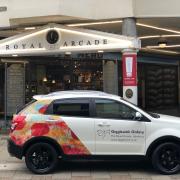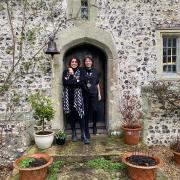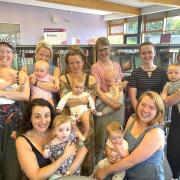Stewart gives us an insight on his role
How did you get where you are today (key previous roles, any important mentors etc)?
I started my career as an apprentice for Black & Decker after completing my degree in electrical and electronic engineering. After several years, including setting up a manufacturing plant for them in the Czech Republic, I joined BAA as customer services manager at Glasgow Airport. I then moved to Budapest Airport before becoming managing director of Stansted back in the UK. After the competition authorities broke up the BAA, I moved to become CEO of the new independent London Gatwick airport.
--------------------------------------------------
What do you think employers should be doing to improve opportunities for young people?
I believe that employers should absolutely give young people the greatest opportunity possible to help them get into work – whether this is through apprenticeships or full time employment. We already have a fantastic apprenticeship scheme at Gatwick and if a second runway is given the go-ahead, we will look to build on that.
We recently pledged that to ensure local young people directly benefit from the new jobs being created, Gatwick will establish a new £3.75m apprenticeship fund. The fund will help airport employers and local companies create 2,500 new opportunities for local young people.
--------------------------------------------------
By their nature airports seem like a kind of no man’s land; a lot of people feel their holiday starts when they walk through the doors. How connected to its locality is Gatwick?
At Gatwick – the local community and our passengers are at the very heart of everything that we do. We have the mantra that we want to treat every passenger as our guest and that we want the airport experience to be a positive part of the journey.
Along with this, Gatwick is one of the area’s largest businesses meaning we play a significant role in the community. We are the single largest employer and we contribute millions annually to the local economy. In terms of the local impact of our airport, we strive to recognise our responsibilities and work with our community to be a good neighbour.
We are also proud to support three charities; Cancer Research UK, Gatwick TravelCare and Chestnut Tree House. Chestnut Tree House is one of Gatwick Airport’s charities for 2014, chosen especially by our staff. We’re delighted to be supporting one of the charity’s key fundraising events of the year, their Snowman Spectacular Ball. The Chestnut Tree House is the only children’s hospice in Sussex and cares for almost 300 children and their families. It offers families a home-from-home environment providing high quality specialist palliative care and support to children with progressive life-limiting conditions.
--------------------------------------------------
Tell us about Gatwick’s corporate responsibility commitment
I and my team continue to take responsibility for managing and reducing our impact on the environment. That’s why in 2010 we launched our Decade of Change strategy.
This strategy sets targets across all key sustainability areas including water use, climate change and biodiversity issues for us to deliver by 2020. It describes how we aim to grow sustainably through responsible environmental management and performance coupled with strong community programmes.
Operating a responsible Gatwick means striking the right balance between the environmental impacts and the social and economic benefits of the airport while offering our passengers a great service. With operational efficiencies come environmental efficiencies, so the better we manage our facilities, the smaller our environmental footprint will become.
We will only achieve our targets by working closely with our stakeholders and business partners to deliver joint work programmes. This means that the people we work with, the companies we engage with and the passengers travelling through Gatwick all have a part to play.
It’s not simply about improving our environmental performance; it’s about modernising the airport in the most sustainable way that will enable us to achieve our targets. It’s also about making sure that during this period of development the benefits to the economy and to our local community are maximised.
--------------------------------------------------
The second runway is a thorny issue: while it will mean more jobs in the area some people say it will have an adverse effect on house prices etc. Why is a second runway right for Gatwick and how would the community benefit?
A second runway at Gatwick would create around £90 billion of economic benefits for the UK but it would also have significant economic benefits locally, as well as creating around 22,000 jobs. We have also recently announced a series of pledges worth more than £250 million to help deliver improvements in the areas that matter to local people the most - ranging from housing and infrastructure to jobs and noise mitigation.
In terms of how seriously we take our responsibility as an airport, we have already introduced the most innovative noise mitigation scheme in Europe that allows many more people to received double glazing and insulation. As well as this, Gatwick’s unique Council Tax initiative would see those homes most affected by noise from a second runway receiving annual compensation equivalent to Band A Council Tax (currently £1,000) if and when the runway becomes operational.
--------------------------------------------------
Read on



























